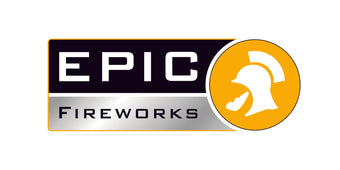How are fireworks made?
Unless you work in the fireworks industry, this has to be a question that most of us will ask at some time, even if it is the privacy of our own heads. The definition is that it is a device which uses combustion or explosion to produce an auditory and or visual effect. Pyrotechnics (or anything relating to explosives) including fireworks, sparklers, matches, flares and even rocket-propelled boosters as used in space flight all originate from the same principle.
The earliest types of fireworks were made from bamboo or paper tubes filled with ground charcoal (fuel) and sulphur which when lit created a flash of smoke and fire but no explosion. The discovery of saltpetre (KnO3) in the mid-first century AD in China was the turning point in the creation of explosives to this day. Since the combination of the two fuels (charcoal and sulphur) and the oxidizer (saltpetre) and the creation of the first known fireworks around 1100 AD things have never looked back. The Chinese used black powder for fireworks, signals and weapons in the form of bombs and rockets and then implemented its use in mining and road building projects for the next couple of hundred years.
Black powder was used for gunpowder until it was replaced by nitrocellulose in the late 19th century and then by dynamite in the early 20th century but it is still used in fireworks today.
In China, the evolution of the humble firecracker into the full-on massive display shell of today was gradual and continues to this day as more and more effects are created using the basic principles from hundreds of years ago.
In Europe, fireworks began with the use of military explosives adapted for use in celebrating victories and over time progressed to the more ornamental productions designed by Italian pyro specialists in the sixteenth to the eighteenth centuries. Even now in 2013, there are a massive number of native Italian families around the world who are grand-masters of this art form. You only have to hear the names Grucci, Zambelli, Parente and Vaccalluzzo in firework circles to see the look of awe as these are the grand-masters of pyro – we are not worthy pyro gods!! These Italian fireworks were usually shown on lavishly decorated wooden sets, often floating on bodies of water, both for safety and to reflect the beautiful displays.
Although the firework displays of the Italian masters were extremely complex and impressive works of art, the technology of the time limited their colour and brightness but following the introduction of aluminium and magnesium in the 19th century this matter was resolved and then onto the development of potassium chlorate made deeper more intense colour more achievable.
The construction of a firework has changed little over the years as a small tube is packed with flash powder, stars (which are little cubes of an explosive mixture containing a mixture of salts and metals to create colours, sparks and effects) and lift charge to make sure the effects reach the right height.
A fascinating subject which shows the progression over thousands of years from humble beginnings to the multi million pound industry it is today.
